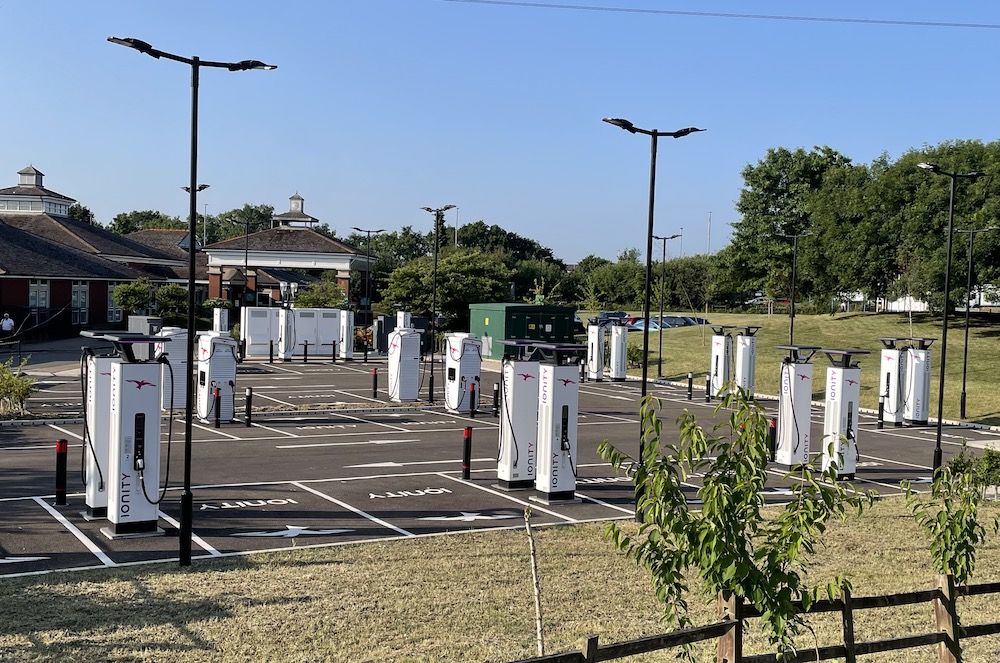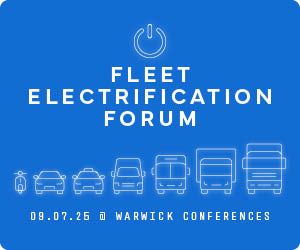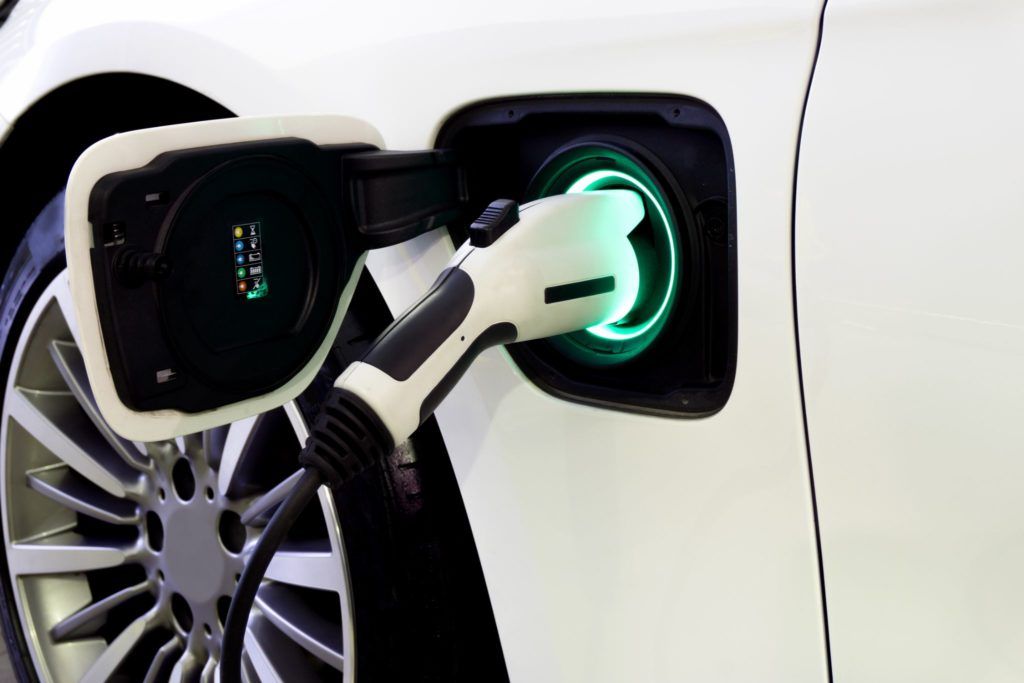Pia Bretschneider, Country Manager UK and Ireland at IONITY, speaks to Transport + Energy about the company’s plans to roll-out a reliable high-power charging network for electric vehicles.
Q. For anyone that doesn’t know IONITY, how would you sum up the company?
A. “IONITY is a joint venture of BMW Group, Ford Motor Company, Hyundai Motor Group, Mercedes Benz AG and Volkswagen Group with Audi and Porsche.
“Our belief is that e-Mobility will work only once people can travel long distances and leave cities in their electric vehicles. Our aim is to make e-mobility an obvious and accessible option for anyone, anywhere across Europe. Our goal is simple: Building a high power charging network for electric vehicles along major highways in Europe.
“We do this by installing and operating a pan-European network of 350 kW charging stations along motorways and key travel routes. Drivers of current and future generations of electric vehicles (EVs) – using the European charging standard CCS (Combined Charging System) – benefit from maximum charging speeds and 100% renewable energy for both emission-free and carbon neutral driving.”
Q. Why is it so important to simplify electric vehicle charging throughout the UK and Europe?
A. “The recent announcement by the UK Government to ban sales of petrol and diesel cars by 2030 means that the transport and energy industries will undergo a major transformation as people move away from the combustion engine vehicle and into alternative technologies, mainly EVs. A smooth transition to EVs will mean that the consumer experience has to be at the heart of the change – including at the charging station.
“Charging in public should not be a hassle or an adventure. This is why at IONITY we focus on not only the speed of charging, but also ensuring the chargers work reliably, are easy to find, offer multiple payment options and are located next to services like coffee and toilets. And we have an amazing Customer Support team who serves our customers at all times of the day in multiple languages should customers require any assistance.
“We want to be a key player in helping the Government in the UK but also governments across Europe to drive forward their green ambitions as well as help consumers to drive at ease.”
Q. In what ways are IONITY working to ensure a greater number of charging points can be used across a single network?
A. “Due to the fragmented nature of the UK market many customers have to carry with them multiple Apps and RFID cards that are only compatible with the network of a single charge point operator. To make sure the EV drivers can access as many charging networks as possible, IONITY offers its network for integration into the offer of various Mobility Service Providers (MSPs) via established roaming hubs (Hubject, Gireve, e-clearing.net, be.energised).
“Furthermore, our chargers are easy to find as they are integrated into Google Maps and into the most widely used local Apps for finding EV charging stations. We also offer charging without any contract i.e. direct payment via smartphone.
“By using the European charging standard CCS (Combined Charging System), the IONITY charging network is open to all EV drivers across Europe – regardless of a specific car-brand.”
Q. What are the main challenges?
A. “The type of infrastructure we install is best suited for motorways and other long-distance routes, but most of the Motorway Service Areas haven’t been accessible for the majority of charge point operators. There have been encouraging messages about opening the MSAs for competition. This should lead to positive outcomes for the consumer that you would expect in a competitive environment.
“Another challenge we face in the UK is the availability of power from the local distribution network operators. While the Government has announced funds aimed at improving the electricity grid infrastructure, it is likely that the upgrade works will take some years. IONITY have successfully deployed 350kW charging hubs on the Motorway Service Areas operated by the Extra Motorway Service Area Group as well as in other key locations suitable for ultra-rapid charging and will continue to do so in 2021 and beyond.
“As we operate in over 20 jurisdictions, a dedicated harmonised regulatory framework for charging infrastructure would support pan-European charging networks and give charge point operators a legal framework upon which they can base a long-term business. Currently we are seeing different approaches taken in different markets, which adds to the challenge of rolling out a European network.”
Q. What do you make of the focus on EVs in the UK?
A. “In the past few years interest in EVs has increased, and we’ll continue to see a rapid transition to EVs following the Government’s announcement in 2020 to ban sales of new internal combustion engine (ICE) cars and vans by 2030. From our European survey, we found that 41% of UK drivers support the Government’s ban on petrol and diesel cars and vans, however, 56% of Brits feel that the cost of buying a new EV is prohibitive and a third of drivers say that the lack of possibility to charge at home is keeping them from making the switch.
“We have seen consumers become more aware not only of EVs because of the Government’s decision, but also as more become increasingly aware of the impacts EVs have on the environment. According to our survey 34% of non-EV drivers would switch to reduce carbon footprint and consider buying an EV in the next 12 months.”
Q. Why is it so important for the transport and energy sectors to work together?
A. “With the electrification of transportation, the two sectors are intrinsically linked. Electric mobility will only work if we have a robust but agile energy sector. For example, our IONITY stations need a large supply of power so that we can deliver an ultra-rapid charge, even with many cars charging simultaneously. The availability of the supply can be a challenge for the successful transition to e-mobility in the UK and the Government has announced funds to upgrade the energy network.”
Q. What barriers still need to be overcome to allow for the widespread adoption of EVs?
A. “Our European survey showed that the key barrier for non-EV drivers in the UK is the cost of the car (56%). This was followed by concerns related to charging. A third of consumers said they cannot charge at home and that this was preventing them from driving an EV. Others felt finding a charger and the length of time to charge were key concerns. Fortunately, there is a lot of focus on improving both the availability of charging infrastructure as well as the consumer experience, driven both by the Government and by companies like IONITY.”
Q. How important is it that vehicle manufacturers now shift their focus to electric vehicles?
A. “Market diffusion and penetration of electromobility depends as much on the electric vehicles available to consumers as on the potent charging infrastructure on hand to charge these vehicles. It is important that vehicle manufacturers offer enough choice for consumers in all price segments. We are seeing car manufacturers announcing and launching new models at an increasing pace and making huge investments into electrification of their vehicles. It’s not an easy task to transform an industry, and I am really impressed with how some of them are embracing the change.”
Q. Do you expect to see more electric only forecourts spring up across the UK? How will IONITY be involved with this?
A. “I do expect so, and there are several companies who are already doing so or have announced plans. In our initial phase we have chosen to focus on the speed of delivery of a European network. We currently operate hubs in 340 locations, which would not be possible had we taken an approach to build forecourts. We have sought locations that already have facilities such as coffee and toilets and which are accessible for charging 24/7.”
Q. How can you ensure that consumers are paying a fair price when refuelling their EVs?
A. “Consumers will be refueling their EVs in different types of locations at different speeds. For most people this means the majority of their charging transactions take place when they park their car for a longer period of time, such as at home overnight. At these locations a slow AC charger is the most cost-effective solution and the consumer pays the domestic electricity rate when charging at home. On longer trips, high speed chargers like those from IONITY ensure that the consumer can charge hassle-free and super-fast to get to their destination. The costs for providing these types of chargers is significantly higher than providing charging at slow speeds. There has to be a business case behind the operation of a network – otherwise it will not be sustainable. What customers get at an IONITY station is a super quick charge, a convenient charging location at the motorway with facilities, multiple payment options and multiple chargers to minimise any waiting times. Plug & Charge technology takes the customer experience even a step further by making payment process more convenient for consumers. While Plug & Charge-enabled charging stations are not yet the norm, Plug & Charge technology is already available from IONITY in some countries, including the UK.”
Q. What car do you drive?
A. “An all-electric Hyundai Kona. I am lucky to own a house, so charging at home is easy. We have solar panels on our roof as well as a battery for storing surplus energy. Most of the energy I use for driving is actually generated locally – on my roof.”
Q. Tell us about IONITY’s plans for the rest of this year?
A. “Given that most of the fossil fuel cars and vans will be replaced by electric vehicles by 2035, it is crucial that the appropriate charging infrastructure is in place to enable the future of mobility. Across Europe we have about 340 charging locations open for customers.
“Each location has between four and six charging points of 350kW, providing much-needed infrastructure for the e-Mobility revolution that is green, reliable and fast. Currently 350kW is something that no car which is currently in the market can use, but it means that this kind of charging capacity makes our charging infrastructure future proof for years to come.
“This year, we are continuing the roll out and enabling even more people to transition to an EV with many more charging stations planned to be rolled out this year.”
Image courtesy of IONITY.














